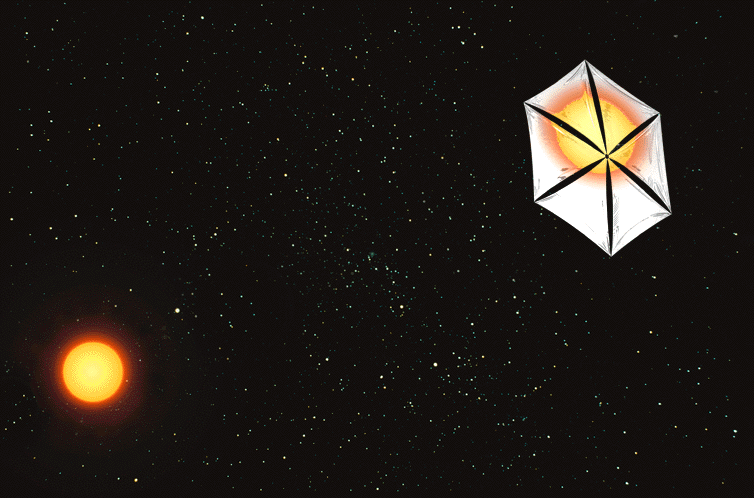My friend Russell asked me under which condition an object would be able to stand still around the Sun. This is a very interesting question; it probes some fundamental facts about the solar system and its applications are keeping many engineers around the world busy.
Planets go around the Sun due to Sun’s gravitational field. Paraphrasing Douglas Adams, the Earth is constantly falling into the Sun, luckily it keeps missing. If we need to have a stalling or hovering satellite, it needs to have a force that cancel out the Sun’s gravity. If our satellite needs to be there indefinitely we can’t use a thruster because the fuel will run out. But we can use the radiation pressure from the Sun to balance out the gravitational force.
Photons, although massless, carry momentum, so light exercises pressure on any surface it comes in contact with. While it is negligible in everyday life, it has an impact in the vacuum of space and it is exactly what we need to keep our satellite still. On the assumption of perfect absorption, it is simply defined by the following formula:
Where W is the solar irradiance (the Sun power), c is the speed of light, R is the distance from the Sun and A is the area of the satellite. We are going Newton’s formula to describe
Where G is the Gravitational constant, M is the mass of the Sun, m is the mass of the satellite and R is the distance from the Sun. Putting the two together we find already an interesting result.
The intrinsic properties of our satellite (its area and mass) are going to be the same, independently of the distance from the Sun. Since we haven’t set either of them let’s define the surface density as their ratio. We find that this value is:
So, an object of 1kg needs to have an area larger than 1250 m2, a square with a 35 meters side. An object like this is called a Solar Sail and it uses the radiation pressure to generate thrust. We are yet to achieve the technical capabilities of creating light and fully absorbing materials to generate enough thrust to compensate for the Sun’s gravity; and although these solar sails might be a few decades away, in 2010 the Japanese Space Agency successfully used a solar sail to take the satellite IKAROS (Interplanetary Kite-craft Accelerated by Radiation Of the Sun) to Venus. This technical field is definitely exciting, and I wonder what the everyday application of these future materials could be?

